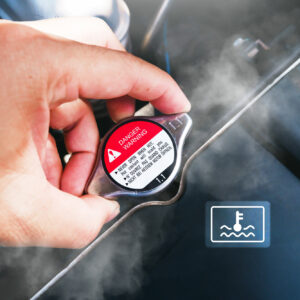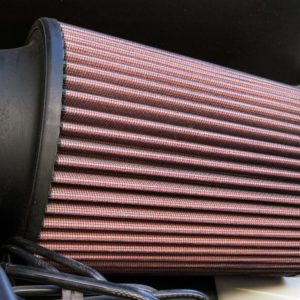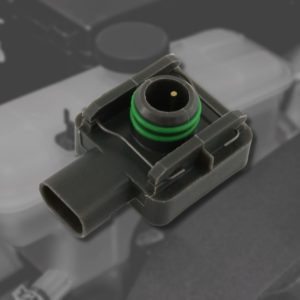When air enters your car engine’s cooling system, it can create air pockets that prevent coolant from flowing through the system. This may cause your engine to overheat. Thankfully, you can quickly get rid of any air in your cooling system with the help of a vacuum coolant filler.
What Is a Vacuum Coolant Filler?
A vacuum coolant filler is a tool specifically designed to remove all of the air in a vehicle’s cooling system. By creating a vacuum, it sucks out all the air in the tank and also draws fresh coolant into the system in just a few minutes.
Keep in mind that while this works most of the time, there are times when it doesn’t remove all the air.
How Does a Vacuum Coolant Filler Work?
Technically, you don’t have to drain all the coolant. To do this, you’ll have to drain the engine block and other parts in the system. The main thing you have to drain is the radiator. Some mechanics use a vacuum refiller every time they do a cooling system repair, and regardless of the repair, draining the radiator typically helps it fill properly.
If you do choose to drain all the old coolant from your vehicle, there’s still one more step you have to do before you fill your reservoir with new coolant: you have to get rid of any air trapped in the system.
Technically, the main thing to do to remove air pockets in your cooling system is to drain the radiator. I use a vacuum refiller everytime I do a cooling system repair, regardless of the repair I make. As long as I drain the radiator, then it will fill properly.
–Anthony Harlin, ASE Certified Master Automobile Technician
Here’s a brief guide on how to remove air from your cooling system using a vacuum coolant filler.
You’ll Need an Air Compressor
Vacuum coolant fillers need a constant supply of 90 pounds per square inch (psi), so you’ll need a powerful enough air compressor before you can use it to remove air pockets from your cooling system.
Once it’s connected to an air compressor, the vacuum coolant filler can now get to work. The vacuum coolant filler should have a knurled knob to seal the adapter to the opening, so you’ll have to turn it after you insert it into the neck of the reservoir tank to make sure it fits snugly in the opening.
If there is an overflow hose off of the neck of the radiator, you will need to pinch it off with pliers.
It’ll Create a Vacuum
Once the venturi vacuum module is connected to the unit and the air line is connected to the vacuum, the vacuum coolant filler should start hissing. This hissing noise means there’s air blowing over the venturi valve, which will create a vacuum in the system.
This will gradually suck out all the air in your cooling system. The gauge should read 24 to 26 psi once it’s completely empty. On some vacuum gauges, it will read approximately 28 to 30 inches of vacuum when the system is ready to refill.
If you’re finding it hard to get to this pressure level, then there might be a leak in your cooling system that you’ll have to deal with first.
You Can Use It To Refill Coolant
In the same way it can suck out all of the air from your cooling system, the vacuum coolant filler can also suck coolant into the reservoir tank.
Make sure to hold the jug of fresh coolant at the same height as the adapter unit and pay close attention to how much coolant is left in the jug. You’ll have to close the valve as soon as it empties or you might end up sucking air back into your cooling system.
When the vacuum coolant filler’s gauge hits zero, this means your reservoir is finally full. All that’s left to do is to remove the vacuum tool from the opening and reattach the cap.
Here’s a tip: you’ll actually want to make sure you have more coolant than it will take so the coolant does not run out before the vacuum to keep any air out of the system.

How Does Air Get Into the Cooling System?
Ideally, air should never enter your vehicle’s cooling system. In reality, however, it happens a lot more often than you might think. Here are some common causes to consider:
Cooling System Repairs
Whenever a mechanic repairs a part of your cooling system, there’s a big chance of air entering the system. Replacing your vehicle’s coolant can also cause air to enter.
Leak in Radiator
Going too long without changing your coolant can lead to some pretty expensive damage, including a crack in your radiator. Over time, your radiator can start to corrode if you go too long without changing your coolant.
This can cause coolant to leak from the system while allowing air to enter through the cracks, causing air bubbles to form in your radiator.
Faulty Water Pump
Just like a cracked radiator, a faulty water pump can also cause air to enter your cooling system. Dirty coolant can cause different parts of your water pump to fail. When this happens, coolant can leak from corroded seals, which also allow air to enter.
Cracked Hoses
Have you inspected the hoses in your cooling system recently? Over time, these hoses can also wear and crack, causing coolant to leak and air to enter your cooling system.
Why You Should Remove Air From Your Cooling System
Using a vacuum coolant filler might seem like a lot of trouble, but it’s not nearly as bad as dealing with trapped air bubbles in your cooling system. If you aren’t fully convinced, here are some negative effects to consider:
Air Pockets Create Blockages
In order for your engine to function properly, your coolant needs to constantly flow through different parts of your cooling system. Unfortunately, air pockets can create blockages in the system and hinder your coolant’s movement, causing your engine to overheat.
The main air blockage problem is air getting trapped at the thermostat. This will cause overheating.
Uneven Distribution of Coolant
Because air pockets create blockages in your cooling system, your coolant is unevenly distributed throughout your engine. Some parts will have too much coolant, while others won’t have enough. This causes hot spots in your engine, where coolant fails to absorb the excess heat and leaves your engine prone to overheating.
Malfunctioning Heater Core
If you’re weak to the cold, then it’s a good idea to always make sure there are zero air pockets in your cooling system. Otherwise, you might end up dealing with a malfunctioning heater core.
Your vehicle’s heater core needs coolant in order to blow hot air into your cabin. Too much air in your heater core can bring down the temperature of your coolant and cause your heater core to blow cold air or, in some cases, stop functioning completely.
Where to Buy Replacement Cooling System Parts for Your Vehicle
Your vehicle’s cooling system helps keep its engine in tip-top condition. If there’s air in your cooling system, chances are a damaged cooling system part is to blame. You’ll want to hire a trusted mechanic to diagnose and repair the issue. Thankfully, if you need cooling system parts, you can order them from CarParts.com.
CarParts.com has a large number of cooling system parts available on our website. Order quickly and conveniently from the comfort of your own home. Our price match guarantee and 60-day return policy in place, let you order online with confidence. Thanks to our fast shipping operations, we’ll deliver your parts straight to your doorstep in as fast as two business days.
If air’s gotten into your cooling system, it’s likely time to replace some worn-out parts. Order a brand new radiator or other cooling system parts at CarParts.com today
Any information provided on this Website is for informational purposes only and is not intended to replace consultation with a professional mechanic. The accuracy and timeliness of the information may change from the time of publication.
































